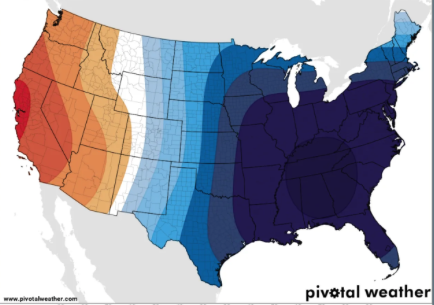Frigid air is poised to sweep across parts of the U.S., including the South and Southeast, by mid-January, potentially breaking records and unleashing significant winter storms.
Polar Vortex Brings Arctic Chill
Pieces of the polar vortex are forecast to dip southward from northern Canada into the U.S. during early and mid-January. This weather pattern, featuring strong high pressure over Greenland and a deep jet stream trough in the East, creates ideal conditions for major snowstorms in the Southeast, Mid-Atlantic, and Northeast.
However, the cold itself could also strain infrastructure, with power outages a possibility depending on how severe the freeze becomes. Models suggest areas from Texas to Alabama, as well as the Southeast and Appalachians, could experience the brunt of the cold, with overnight lows potentially plunging below 0°F.
When the Cold Will Hit
Two rounds of extreme cold and storm activity are expected across the Midwest and Eastern U.S.:
- Early January: A storm could bring a wintry mix to New England.
- January 6-14: Meteorologists are closely watching this period for significant East Coast snowstorms.
Even without major storms, frigid air is forecast to sweep southward, bringing the season’s coldest temperatures and dangerous wind chills to the Southeast from January 7-13. Freezing temperatures could extend as far south as the Gulf Coast and Florida, potentially threatening sensitive citrus crops.
What’s Driving the Freeze
The polar vortex, a low-pressure system over the Arctic, traps the coldest air in the Northern Hemisphere. When its strong winds weaken, parts of the vortex can break off and drift south, unleashing Arctic air over the U.S. and Europe.
This phenomenon, similar to the winter of 2013-2014, could play out again in mid-January, with a piece of the vortex moving from Minnesota to the Southeast.
Economic Impacts and Climate Context
Anticipation of the extreme cold has already driven natural gas futures up 21% in one day, reaching their highest levels since early 2023. This spike reflects expectations of increased heating demand.
Research suggests polar vortex disruptions may become more frequent as global temperatures rise, though this remains a topic of active study. A recent study hypothesizes that warming trends could make these extreme cold events more likely in the mid-latitudes.
Bottom Line
Extreme cold and snowstorms, potentially capable of causing billions in economic impacts, are expected across much of the U.S. this January. Prepare for record-breaking temperatures and significant winter weather challenges.



